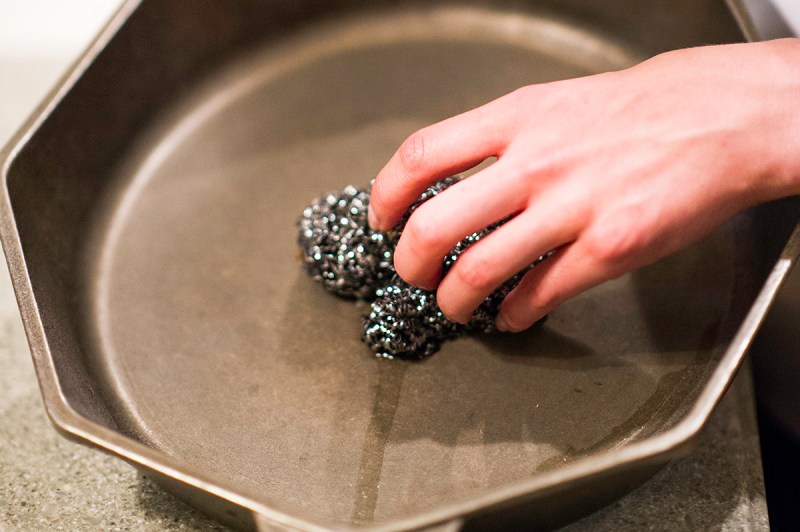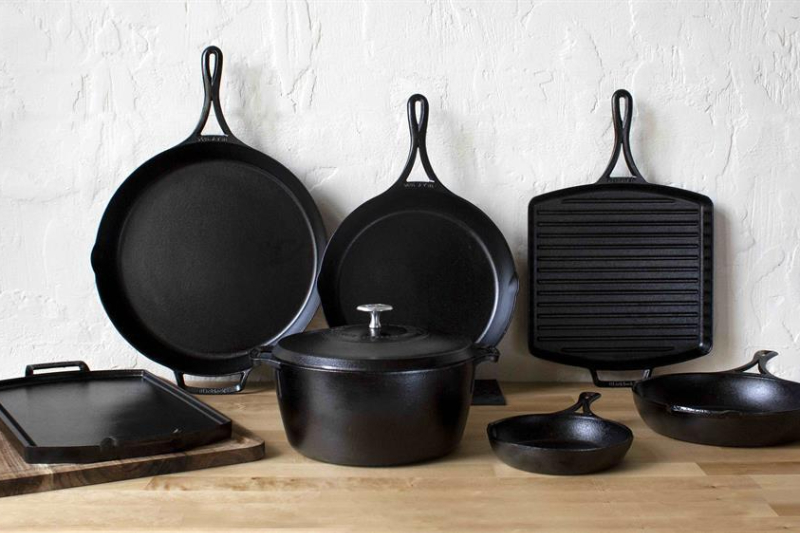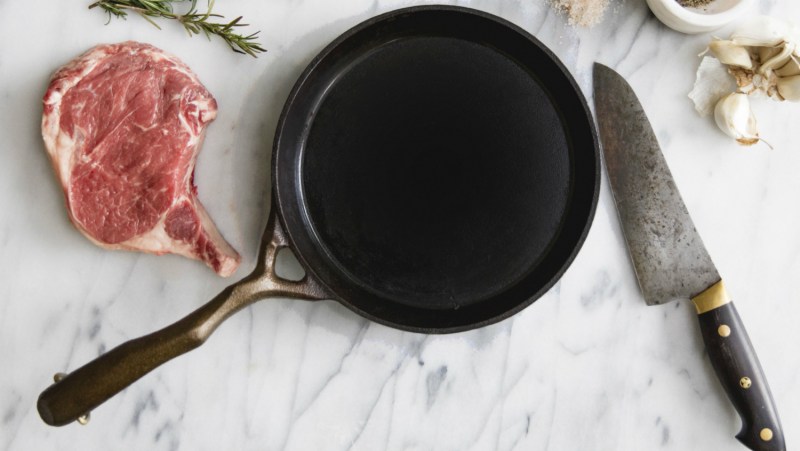In the culinary world, cast iron is a tried and true format able to cook foods in a very specific and very attractive way. Yet, many of us don’t know how to work with the stuff appropriately, whether it’s seasoning a skillet or simply keeping it clean and in excellent working order.
We thought about talking to a chef but quickly remembered we could take it one step further. So, we reached out to our friends at FINEX, who specialize in beautiful cast iron cookery out of their Portland headquarters, to get the lowdown on the basic sanitation rules when it comes to this cook-approved alloy.
Our quest for clean answers involved Michael Griffin, the brand director at FINEX. He reminded us that cast iron is heavy-duty and can beautifully prepare any number of dishes, and the cleanup is, thankfully, relatively easy. With that simplicity comes the added urge to use cast iron even more, whether you’re cooking in your kitchen or over a campfire.

How to Clean Cast Iron
Don’t worry; chances are you already have everything you need to keep cast iron clean. The same kitchen utensils you cook with every day can also be used to wash. After all, with cast iron, it’s less about a squeaky clean regimen than keeping the seasoning layer fresh and eliminating other build-up. “After cooking, scrape clean with your spatula, rinse with hot water, and completely dry,” Griffin says. “Don’t just air dry; warm your cast iron on the stove and oil it lightly if it’s lost its shine. Buffing a light coat of oil on the inside of your cookware with a paper towel or rag is best.”
Over time, or after cooking with certain ingredients, you may have to deal with more residue. In that case, you may need a few extra tools, but nothing unusual. “Don’t worry if you’ve got stubbornly stuck-on food,” Griffin says. “A chain link scrubber, rock salt, or a wood scraper can get it. Sticking is often a sign of thin seasoning. Try building it up again by buffing a thin oil coating into the cooking surface and heating it until it smokes.”

Proper Cast Iron Upkeep
Alright, your skillet is clean, but there are some additional things you can do it keep it that way or at least make the next round of cleanup all the easier. “Unlike synthetically coated cookware, cast iron can, and often should, be used with metal utensils,” Griffin says. Using a sturdy metal tool will help the integrity of what you’re cooking and also keep your skillet from collecting too much gunk.
“A thin metal spatula, like a fish spatula, is a fantastic tool for cast iron cooking,” he continues. “Not only does it make flipping and serving foods easier, but it also helps you keep the cookware clean while you’re cooking. Scrape stuck-on bits or get underneath steaks and other seared proteins with it so you can flip them with their seared crust — and flavor — intact.”

What to Avoid
There are a few things not to do when cleaning your cast iron cookware. Don’t put it in the dishwasher or soak it for prolonged periods. All that water can cause the vessel to rust. Many advocate against using soap when cleaning this metal, but there’s little harm in doing so, at least every now and again. The soap can put a dent in the layer of seasoning on your skillet, but that can easily be brought back to life with more cooking and some oil (and other fatty deposits). Every time you work with cast iron, you’re essentially adding another little layer of goodness to its seasoned base. Some soap and water will cut into that a bit, but you’d have to wash often and vigorously to get rid of it completely.
Whether you have a new cast iron pan or your great grandma’s hand-me-down, you should take care of it properly. A cast iron pan that is cared for and used properly can last for decades and provide thousands of delicious meals. Follow the tips above and your cast iron pans will turn into coveted family heirlooms in no time.



